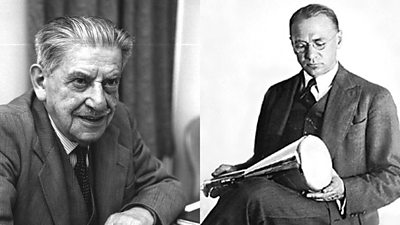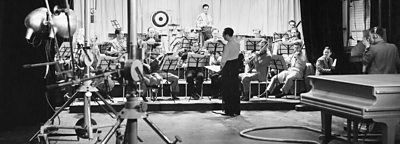Meanwhile, other inventors across the world had not been idle. Many scientists and engineers felt that mechanical television, as developed by Baird, using spinning discs, was not the answer to television.
They felt that the answer lay in a form of electronic television and its champions were: Vladimir Zworykin at RCA in the USA; Isaac Shoenberg's team at EMI in the UK; and a fourteen-year-old farm boy from Idaho called Philo Farnsworth.
It took Farnsworth six years to take his system from first ideas to prototype - and by 1929 he was the first to demonstrate a complete electronic television system with no moving parts. But over the next ten years, despite a number of stunning successes with his 'Image Dissector' camera, he was overtaken by other inventors and faded from the scene.
Vladimir Zworykin fled the Russian revolution and by the early 1920s was working in the USA. He designed a car radio, but the local police chief thought it would distract the driver and promptly put him out of business. Later, working for RCA he developed an electronic receiver tube he called the 'Kinescope' and an electronic camera tube called the 'Iconoscope' - and this heralded the true start of modern television.
Whilst Zworykin was still developing his system, a team of scientists and engineers at the EMI factory in Hayes, led by Shoenberg, turned their thoughts to television. By the mid 1930s they too had developed their own version of the iconoscope. Called the Emitron, this was the world's first practicable television camera. Indeed some of these cameras used at the start of 大象传媒 television in 1936 were still in use over twenty years later.
By the mid 1930s, although still broadcasting his 30-line programmes, Baird had developed a 240-line mechanical television system with much improved picture quality. Domestic receivers had been developed (for both mechanical and electronic television broadcasts) which used a cathode ray tube to display the picture.

